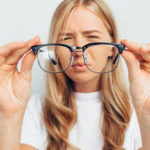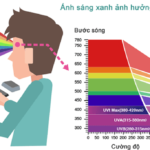Television is a familiar electronic device found in almost every household. However, not many people know where to place the television and what the appropriate distance for watching TV is in order to view it comfortably without harming the eyes.
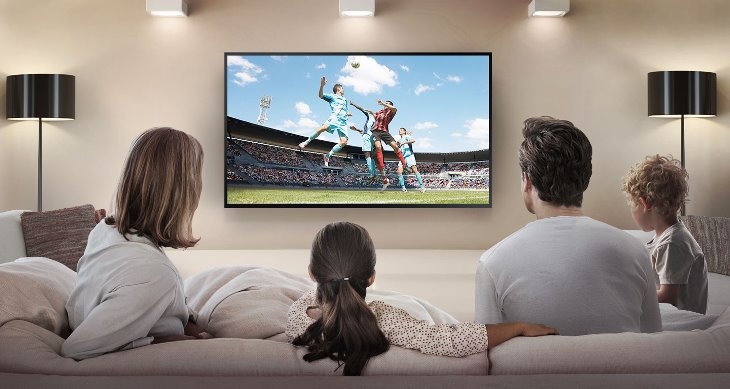
The Dangers of Watching TV at the Wrong Distance
< p>Typically, many families buy and install televisions based on their emotions and preferences without considering the appropriate distance for watching TV. This is the reason why they and their loved ones have to face unnecessary health risks, especially families with children who enjoy watching TV. This is even more important for them because it can adversely affect their children’s eyes.
< p>If the viewer maintains a sitting distance that is too close and focuses on an object for a long period of time, it will cause the eye’s ciliary muscle to contract, and you may have to face a range of eye conditions such as eye strain, eye fatigue, blurred vision, eye pain, and teary eyes, especially in children. In addition, viewers may experience headaches, neck pain, shoulder and back pain, and overall fatigue. Moreover, the radio waves emitted by the TV can also have long-term harmful effects on your skin.
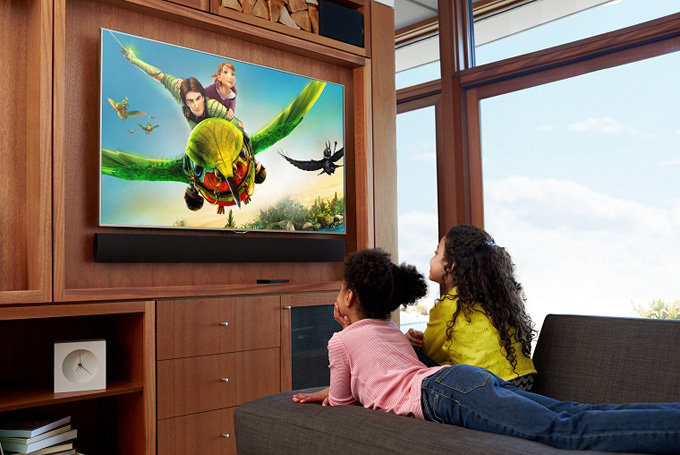
Calculating the Appropriate and Safe TV Viewing Distance
< p>According to the usual principles, the distance from the viewing seat to the TV screen should not be too far or too close. Put simply and most accurately, the minimum TV viewing distance should be twice the screen size, and the maximum TV viewing distance should be three times the screen size. This means that the wider the TV screen, the further away you should sit to avoid the discomfort and eye strain that comes with sitting too close, which directly affects your vision. To be more accurate, you can calculate the safe viewing distance and choose the most appropriate TV placement in your home using the following formula:
Minimum Distance = screen size (in inches) x 2.54 x 2.
Maximum Distance = screen size (in inches) x 2.54 x 3.
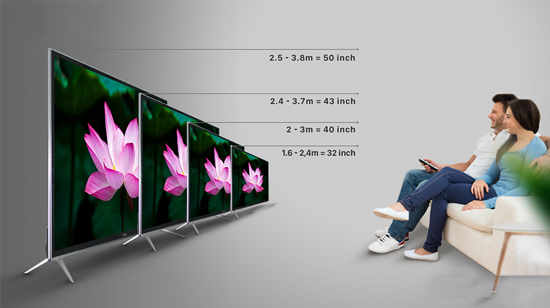
< p>For example, if you want to check a 42-inch TV (where 1 inch = 2.54 cm), by applying the above formula, you will have:< br>
< br>
– Minimum Distance = 42 x 2.54 x 2 = 213.36 cm = about 2.1 m
– Maximum Distance = 42 x 2.54 x 3 = 320.04 cm = about 3.2 m
From that, we can conclude that the safe viewing distance for a 42-inch TV is from 2.1m to 3.2m. We can use the same calculation for other TV sizes. You should consider whether the TV size is suitable for the room size or not.
Therefore, it is clear that the TV placement is directly based on the TV screen size. Because the size of the screen has different viewing distances, the smaller the TV screen, the closer the viewing distance, and vice versa.
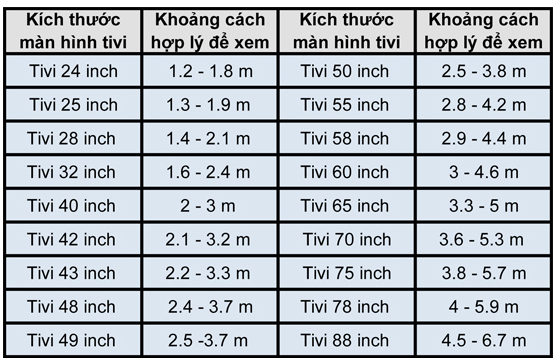 Appropriate TV viewing distance for each TV size
Appropriate TV viewing distance for each TV size
In reality, not all bigger TVs are better. From the moment of buying a TV, homeowners should base their decision on the size and space of the room where the TV will be placed to choose the most appropriate TV size. This is what smart consumers do. If the room is large and the TV is too small or if the room is small and the TV is too big, it will disrupt the spatial structure, lose its sophistication, and the homeowners will not be able to enjoy the programs comfortably as desired.
By Vân Khánh – Vietnamnet.vn
Solving the Mystery of Wild Eye: Wearing Glasses for Rabies Eye and Treatment Options
Do you regularly experience uncomfortable and itchy eyes while wearing glasses? It may be due to a phenomenon known as “Rabies Eye” – but fortunately there are ways to tackle it! Dien May XANH is here to provide information on the causes of this phenomenon and the solutions you can take to reduce its effects. Read on to find out more!
Tips for Relief from Eyestrain and Dry Eyes Resulting from Prolonged Screen Use
Do you ever feel like your eyes are overworking? This is a common symptom of eye strain, which can include temporary blurred vision and dryness of the eyes. Read on with Dien May Xanh to get tips on how to cope with eyestrain and dryness in the eyes that comes with prolonged use of laptops, computers, and phones.

























